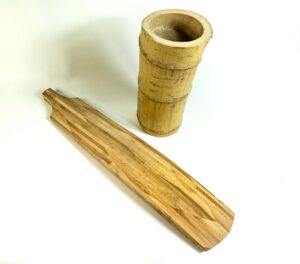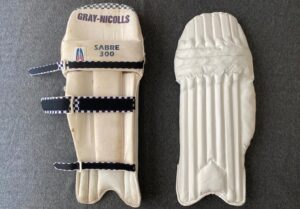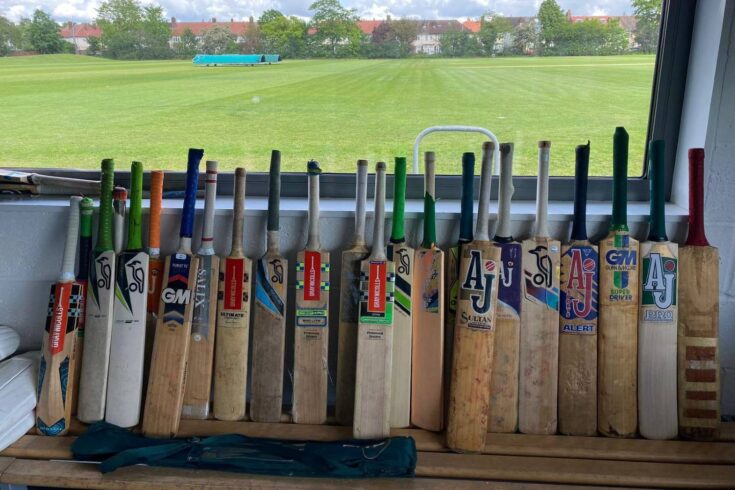Cricket is the world’s second most popular sport with millions of regular players, including around 350,000 in the UK. But its environmental footprint is substantial.
There’s an estimated 30 million bats sold globally each year and approximately 1,600 tonnes of gear discarded annually in the UK alone. The scale of the consumption and waste in the industry is substantial and cricket faces a significant sustainability challenge.
Two projects funded by the Arts and Humanities Research Council’s Impact Acceleration Accounts (IAAs) are leading the charge toward a more sustainable future for cricket. These small grants have empowered researchers to turn high-impact ideas into reality.
Reinventing the cricket bat
The University of Cambridge’s CamBoom project is pioneering a radical rethink of the materials used to make cricket bats. Bats are traditionally made from English willow, which is increasingly impacted by climate change and has long maturation times of 15 years.
However, bats could soon be crafted from bamboo, a fast-growing and more sustainable alternative.
Over a year, the Cambridge team designed four new bamboo blade prototypes and collaborated with manufacturers 5 Axis Routing and Millichamp & Hall to produce 16 bats. These were tested by players from St John’s College and the University Cricket Club, who found them nearly indistinguishable from willow bats in both look and feel. One player said:
It was interesting. It was a different weight as you’d expect from a willow bat. So there are some adjustments you have to make at the start. But it felt good. It definitely felt on a similar level to a normal bat.

Prototype of bamboo cricket bat and piece of bamboo. Credit: Dr Ana Gatoo
To ensure regulatory acceptance, the team engaged with Marylebone Cricket Club (MCC), which acknowledged that change to the Laws of Cricket would be needed to permit bamboo bats to be used. As a significant step toward mainstream adoption, the MCC requested samples for internal testing.
In October 2025 the Cambridge team were invited to present at the ‘Cricket Bat Conference’ at Lord’s. They discussed the future of bat making in the sport due to the shortage of willow and spiralling prices, and showcased their innovative bamboo prototypes.
CamBoom also supported the launch of Drifan Ltd, a student-led spin-out company advancing the project commercially. With backing from UK Research and Innovation Proof of concept funding, the aim is to produce affordable bamboo bats, priced at under £50, to make cricket more accessible and affordable.
Circular design for cricket gear
Meanwhile, the University for the Creative Arts in Farnham is tackling the waste problem facing cricket across multiple IAA projects including gear reuse and repair.
Partnering with Surrey County Cricket Club, the Yorkshire Cricket Foundation, and equipment maker Gunn and Moore, the team developed three prototype batting pads. The pads use Piñatex, a pineapple-based vegan leather, in place of traditional polyurethane.
As batting pad-making expertise is based in south and south-east Asia, a UK costume designer was enlisted to craft the prototypes.
After testing by professional and recreational players, feedback confirmed the pads’ durability and performance. One player noted:
There was actually no rips or damage to the vegan leather after being struck—just dents from the inside.

A pair of cricket pads made using Piñatex leather. Credit: Centre for Sustainable Design
Following successful trials, a refurbished pair of pads was validated by an Indian manufacturer as market-ready, though they flagged the higher cost of vegan leather. Additionally, a yearlong collaboration with Decathlon India explored circular design models for gloves and pads.
Between July and September 2025, the Circular Cricket Gear Hub launched at Spencer Cricket Club (SCC), the largest recreational club in the country. The pilot drop-off scheme collected over 400 items.
Many items, stored in garages or attics, were still usable. Clothing donations were often prompted by changes in club colours or sponsorship. Following the success SCC plan to roll out the drop off scheme from April 2026.
The hub’s first international donation, 180 reused items, went to a new south Asian cricket team in Germany.
The projects have engaged fans and players at high-profile events like the Surrey County Cricket Club Sustainability T20 game, attended by over 21,000 people.
By showcasing their work to industry leaders in the game the teams are laying the groundwork for a future where cricket continues to captivate billions but is also environmentally responsible.
New innings for sustainability
From bamboo bats to vegan pads, these innovations are the start of a major cultural shift where cricket’s future is not just about runs and wickets but a greener game.

